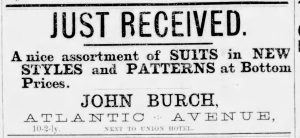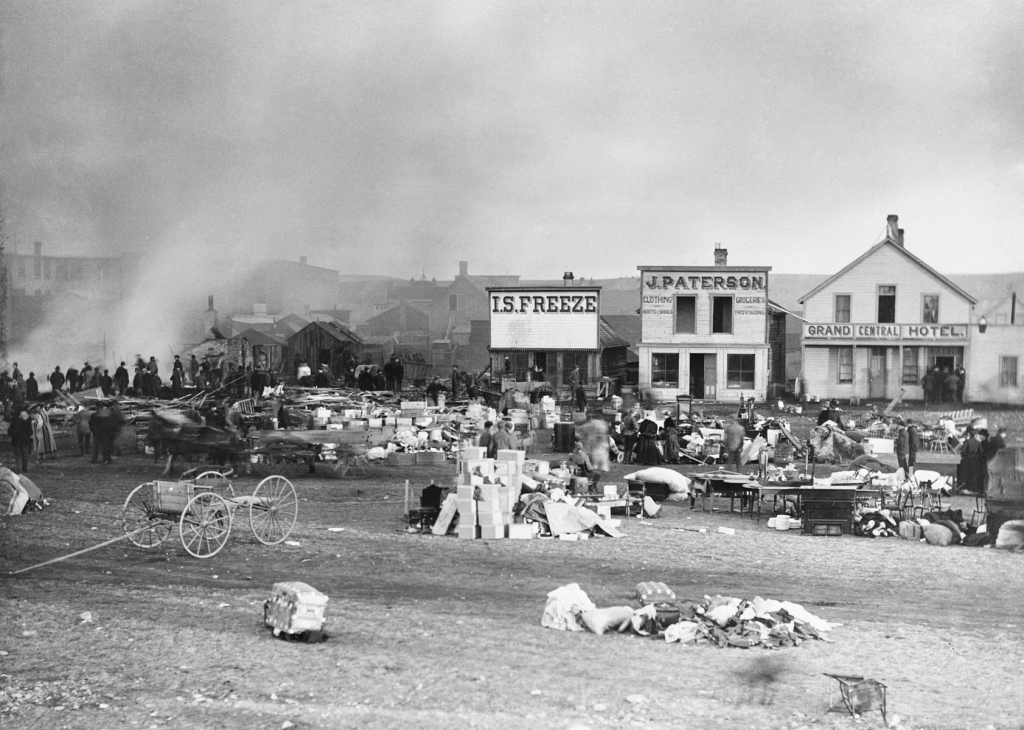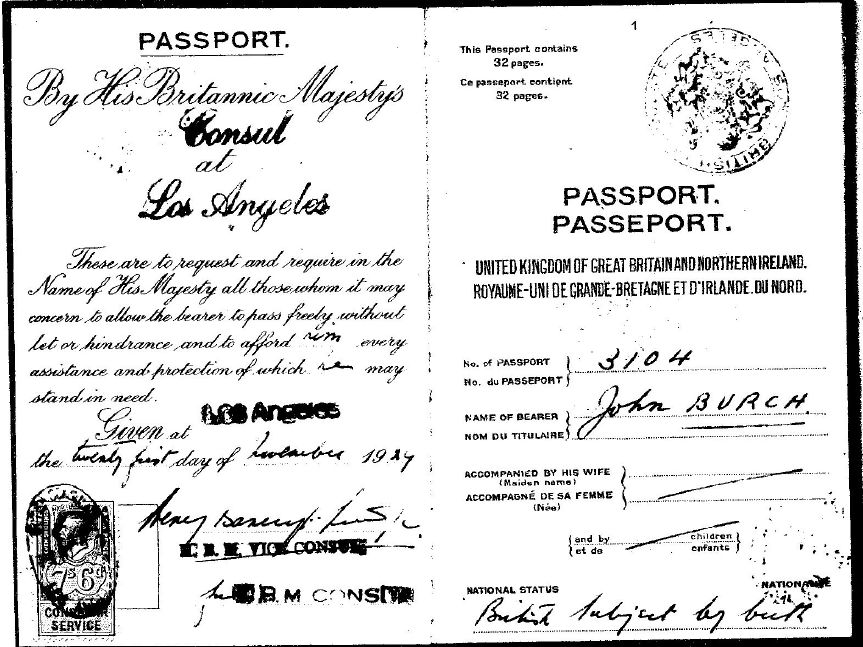I wish I could have known you! Oh, the stories you could tell – you flit in and out of the records like the traveller you always were, turning up in so many unexpected places.
John was the younger brother of our great-grandfather, Edward Burch, (the merchant living in Toronto and father of Ernest). John and Edward were the sons of another Edward, the London fireman, about whom I have written, and his wife, Mary Elvin. (A side note about the name John – this John Burch about whom I write, also had an uncle John, a first cousin John who was the same age, a son John who died in infancy, and a grandson John. Keeping them all straight has been challenging.)
Both were born in London, England, as were their three sisters. At the time of John’s birth in 1846, the family lived at 27 ½ Farringdon Street, an area on the north side of the Thames, now overbuilt. By the time John was five, the family had moved across the river to live near the Tooley Street Fire Station.
He came to Canada as a young boy; initially, he lived near Guelph, but in 1871 (age 25), he was living with Edward and family in Toronto. He married Louisa Ellis in 1872 and they had three children in the next three years: Reginald and Ada born in Stratford and John in Hamilton. Sadly, baby John died of cholera at the age of nine months. In 1877 in Hamilton, John had a dry goods store, John Burch & Co. but he did not stay there long.
By 1880 John and Louisa and their surviving children had moved to Pembina County in what is now North Dakota, and then bought land in Walsh County, ND in 1883. Farming doesn’t seem to have worked out either, as the next location I found for the family was Calgary, where John had established a men’s wear business and built the Union Hotel. Here is an advertisement published on November 5, 1886 in the Calgary Tribune:

Just two days after this optimistic ad appeared, a devastating fire destroyed 18 buildings in the commercial district of then-tiny Calgary, including John’s business and hotel. His insurance of $700 did not begin to cover the nearly $4000 loss. He re-opened his store the following spring but then sold the business.

In 1888, Louisa was appointed as a teacher in the rapidly growing town of Gleichen, southeast of Calgary. However, by 1889, they were living at Red Deer Crossing in the Alberta District of the Northwest Territories. John had bought the trading post there where he found his customers were mostly Indigenous people and freighters. Historic Fort Normandeau is located close to the original spot, southwest of the present city of Red Deer.
The following story taken from The Park Country (by Annie L. Gaetz) reminds us that this was still a pretty wild and unsettled part of the country:
“It was in the late summer of 1889 that a grizzly bear was shot on the homestead of Wilbert Smith, in the Waskasoo district. The cow failed to turn up for milking one morning and the reason was quite apparent when tracks of a grizzly bear were found nearby. Men quickly gathered with rifles to corner the bear before he had time to get away. Besides Wilbert Smith there were his brothers, Joe and Jim, who had homesteads close by, John Burch, Tom Ellis [John’s brother-in-law] and perhaps others, all young men except Burch who was an experienced big game hunter.
It was Tom Ellis who first sighted the bear, which had downed his prey in a small draw on the farm, and after eating his fill, had dropped down beside the carcass of the cow and was having a nap, when Ellis stepped through the bushes and saw him. He stepped back from the bushes and in his excitement shouted “Here he is!” to the men who were close behind, and bruin was asleep no longer, but up on his haunches, ready for battle. All the young men had a shot at bruin, or in his direction; but it was John Burch, who, in his quiet, unhurried way, stepped through the bushes and sent home the telling shot. Mrs. G. W. Smith still has the hide which her husband had made into a rug for her.”
When the railway route was finalized, John moved his store north to the new townsite. He put up a new building in 1891, known for many years thereafter as “The Old Burch Store.”
A local history has this to say about our John:
“In the spring of 1889, John Burch bought the Trading Post from Jas. Healey and brought out his wife and daughter, Annie [sic], and son, Reg, who was killed in the First Great War. They were kindly, hospitable people and their home soon became the social center of the community. Parties and dances were held in their big dining room as well as Anglican church services when a travelling bishop happened along.”

I find it quite interesting that our Burch relatives were running a store in Red Deer at the same time as our Borrowman ancestor, Adam, was homesteading some miles to the east of the settlement. The 1892 letter written by Lily Borrowman makes reference to a trip into Red Deer for supplies – could they have acquired the new boots needed by Edith and Wilson at the Burch Store? I like to think so.

In 1899, a meeting was held in the Burch home to plan for the building of an Anglican Church in Red Deer. Work on the church commenced in August 1899 and a church social was held at the Burch residence to raise funds for its completion.
The April 1901 census shows the family still living in Red Deer, but a newspaper notes in September 1904 that John had been “spending the last year in Victoria, BC and California.” In December 1904, he reportedly travelled to Cuba via Toronto and New York. In July 1906 he and Louisa attended their son Reginald’s wedding in Winnipeg, and the following year sees them travelling home from Cuba.
In February, 1910 John crossed into the USA to join his wife who was already living in Seattle. They moved once again, as the 1920 census shows them living in San Diego, California, where Louisa died in 1928, aged 80.
I have been unsuccessful in locating details of John’s death or burial in California, but in 1929 (age 83) he was issued a British passport by the British Consul in Los Angeles. This document describes him as 5’ 7”, grey hair, hazel eyes and a dark spot on the left temple. The passport was noted as valid for “the British Empire, United States of America and Cuba.” Since his daughter Ada lived in Cuba at that time, I have speculated that he acquired the passport intending to visit her, and may have ended his days there.

Tags: John Burch, Red Deer, travels
Leave a reply